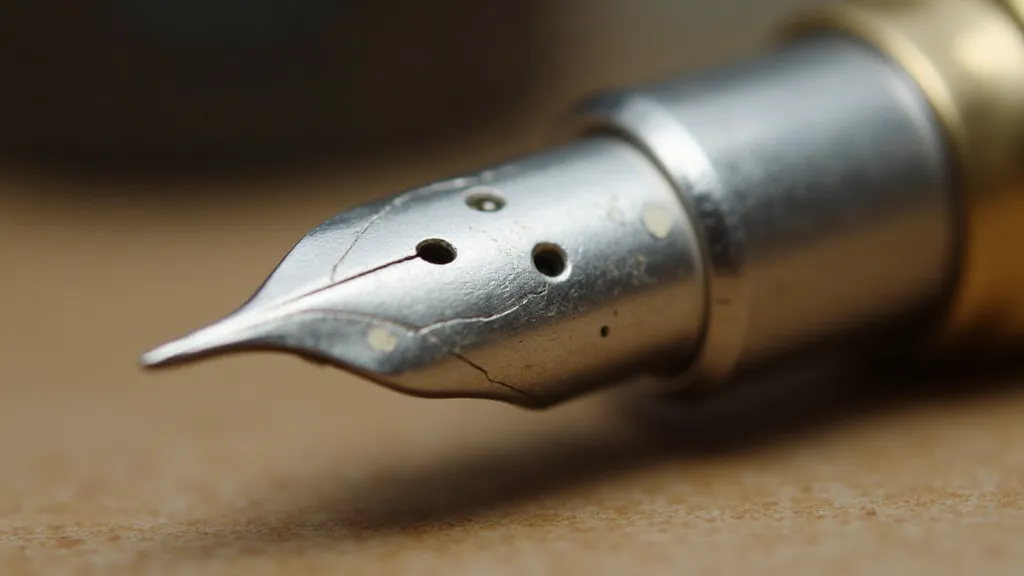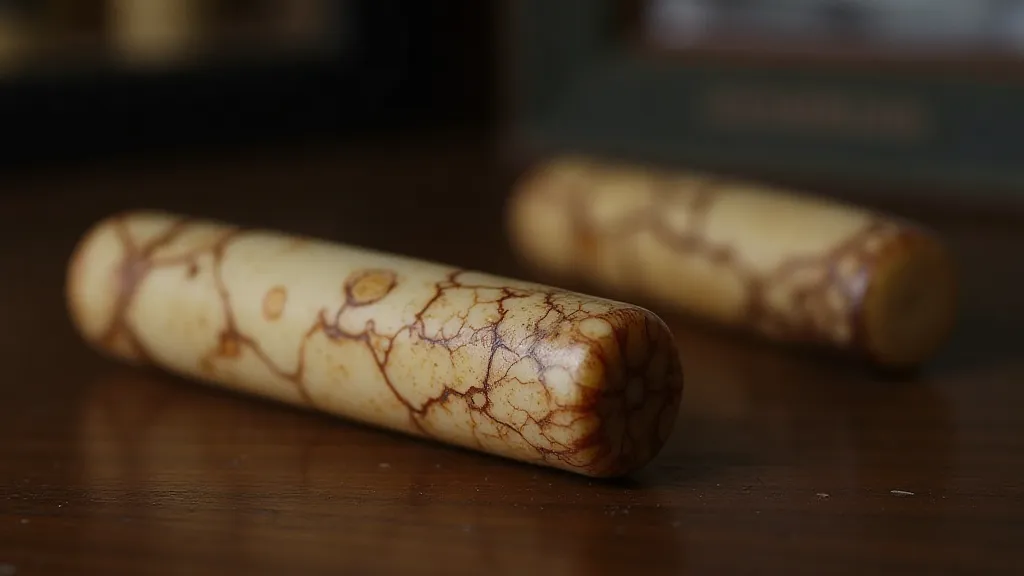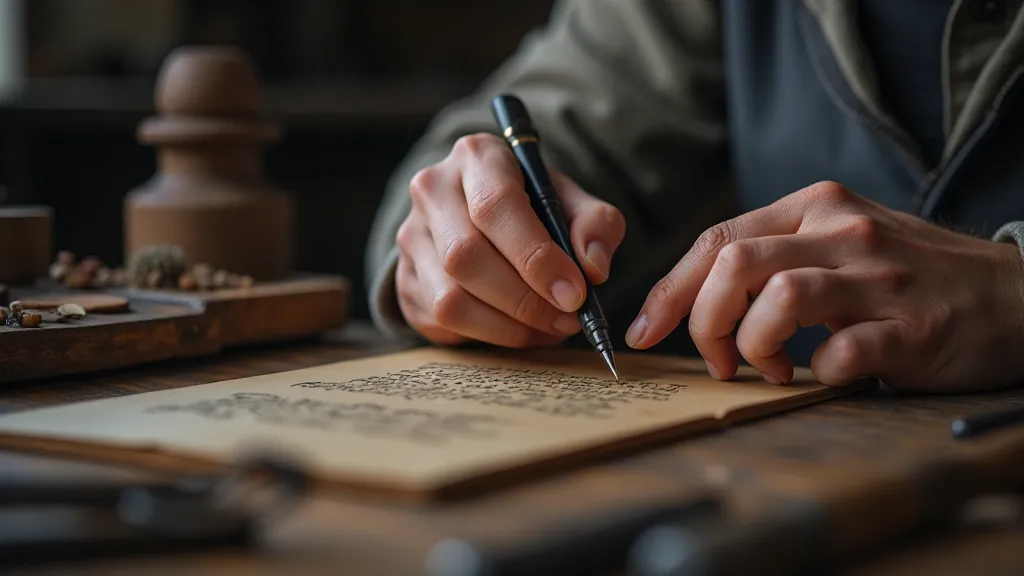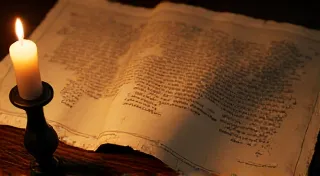Ephemeral Echoes: Repairing Cracks in a Fragile Antique Pen
There’s a certain magic that clings to antique objects – a whisper of lives lived, stories written, and skills perfected long before our own. A vintage calligraphy pen is no exception. Holding one, feeling the cool metal in your hand, isn’t just appreciating a writing tool; it’s connecting to a lineage of scribes, artists, and communicators. But what happens when that connection is threatened – when a crack appears, fracturing not just the pen itself, but the tangible link to the past it represents? This isn’t simply pen repair; it’s preservation, a delicate act of mending echoes.
I remember finding my first significant restoration project – a Conway Stewart 58, circa 1920s – at a small, dusty antique shop in rural England. The seller, a kindly old gentleman with knowing eyes, simply shrugged when I inquired about the crack running along its barrel. “Beyond saving,” he’s said, already dismissive. I saw beyond the fracture, however. I saw the potential; the story waiting to be told again. The pen, once the pride of a fine-writing enthusiast, lay silent, its elegance dulled by neglect. It felt like holding a piece of lost history.

The Silent Language of Cracks
Cracks in antique pens rarely appear spontaneously. They are often the consequence of age, temperature fluctuations, or even careless handling. In early pens, the materials themselves were different. Ebonite, a hard rubber used extensively in early pen barrels and caps, is surprisingly brittle and prone to cracking, especially if exposed to extreme heat or cold. Celluloid, popular in the early 20th century, can become brittle and cloudy over time, often cracking from stress. Even more robust materials, like sterling silver, can develop fine cracks, often referred to as "stress fractures," due to metal fatigue.
Understanding the *type* of crack is the first step in any repair attempt. A hairline crack in ebonite, a result of age and dryness, is vastly different from a clean break in celluloid caused by a drop. Celluloid cracks tend to propagate, often radiating outwards from the initial point of damage. Ebonite cracks, while often brittle, can sometimes be stabilized with careful rehydration. Recognizing these nuances dictates the techniques employed—or, indeed, whether repair is even advisable.
The Delicate Dance of Rehydration
For many ebonite pens with age-related cracks, the first (and often most effective) approach is rehydration. Ebonite, over decades, gradually loses moisture, becoming increasingly brittle. Rehydration aims to restore some of that lost elasticity. This is a slow, patient process. I often submerge the cracked section (barrel or cap) in distilled water, weighted down to ensure complete immersion. The soaking time varies greatly, from a few days to several weeks, depending on the severity of the dryness. Regularly checking the pen is crucial. Excessive soaking can lead to discoloration and swelling.
Following the initial soak, the pen is gently dried, often in a humidity-controlled environment. The key is to prevent the rehydrated material from simply becoming brittle again. A small amount of specialized pen oil, carefully applied, can help to seal the surface and prevent rapid moisture loss. This isn't about "fixing" the crack; it’s about creating an environment where the material can regain some of its original flexibility, minimizing the risk of further cracking.
Celluloid: A Different Kind of Challenge
Celluloid, a pioneering early plastic, presents a different set of challenges. It's notoriously difficult to repair seamlessly. The material's inherent brittleness, combined with its tendency to become cloudy and discolored, makes a perfect restoration virtually impossible. Direct gluing is rarely successful; the bond is often weak, and the appearance is invariably unsatisfactory. The aesthetic compromise is often the guiding principle.
In some cases, specialized resins and fillers can be used to fill the cracks. However, these often result in a noticeable difference in texture and color compared to the original material. A more subtle approach is to embrace the crack as a part of the pen’s history – a visible testament to its age and journey. This requires a deep appreciation for the pen's story and a willingness to accept imperfection. Sometimes, the most respectful restoration is to leave the damage visible, carefully cleaning and preserving it, rather than attempting a false restoration.

Nib Adjustment: Beyond the Crack
While this guide primarily addresses barrel and cap repairs, the condition of the nib is also frequently compromised in antique pens. Nib misalignment, tines that have spread, or even subtle damage – these are all issues that affect the writing experience. Nib adjustments require a delicate touch and specialized tools. Carefully spreading or tightening the tines, or even reshaping the writing surface, can dramatically improve the pen’s performance.
However, it's crucial to understand the limits of nib adjustment. A severely damaged nib—one that is cracked or deeply pitted—is often beyond repair. In such cases, a replacement nib, sourced from a compatible pen, may be the only option. Even then, the replacement nib will subtly alter the pen's character, a reminder of the compromises inherent in restoration.
The Ethics of Preservation
Restoring antique pens isn't just about fixing a crack or adjusting a nib; it's about engaging in a conversation with the past. It's about respecting the skill of the original maker and acknowledging the pen's journey through time. There’s a point where intervention becomes a betrayal – where further restoration compromises the pen's authenticity and historical significance.
I’m often asked if I regret accepting certain restoration projects – pens that were simply too far gone, too compromised to be reasonably saved. The answer is always the same: not at all. Even in failure, these projects offer invaluable lessons. They teach us about the materials, the techniques, and the artistry of a bygone era. They remind us that true preservation isn's always about achieving a perfect outcome; it’s about honoring the past, one fragile echo at a time.

Ultimately, restoring antique pens is more than a hobby; it’s a form of stewardship. We are the temporary custodians of these objects, tasked with preserving them for future generations. And that, in itself, is a profound privilege.





